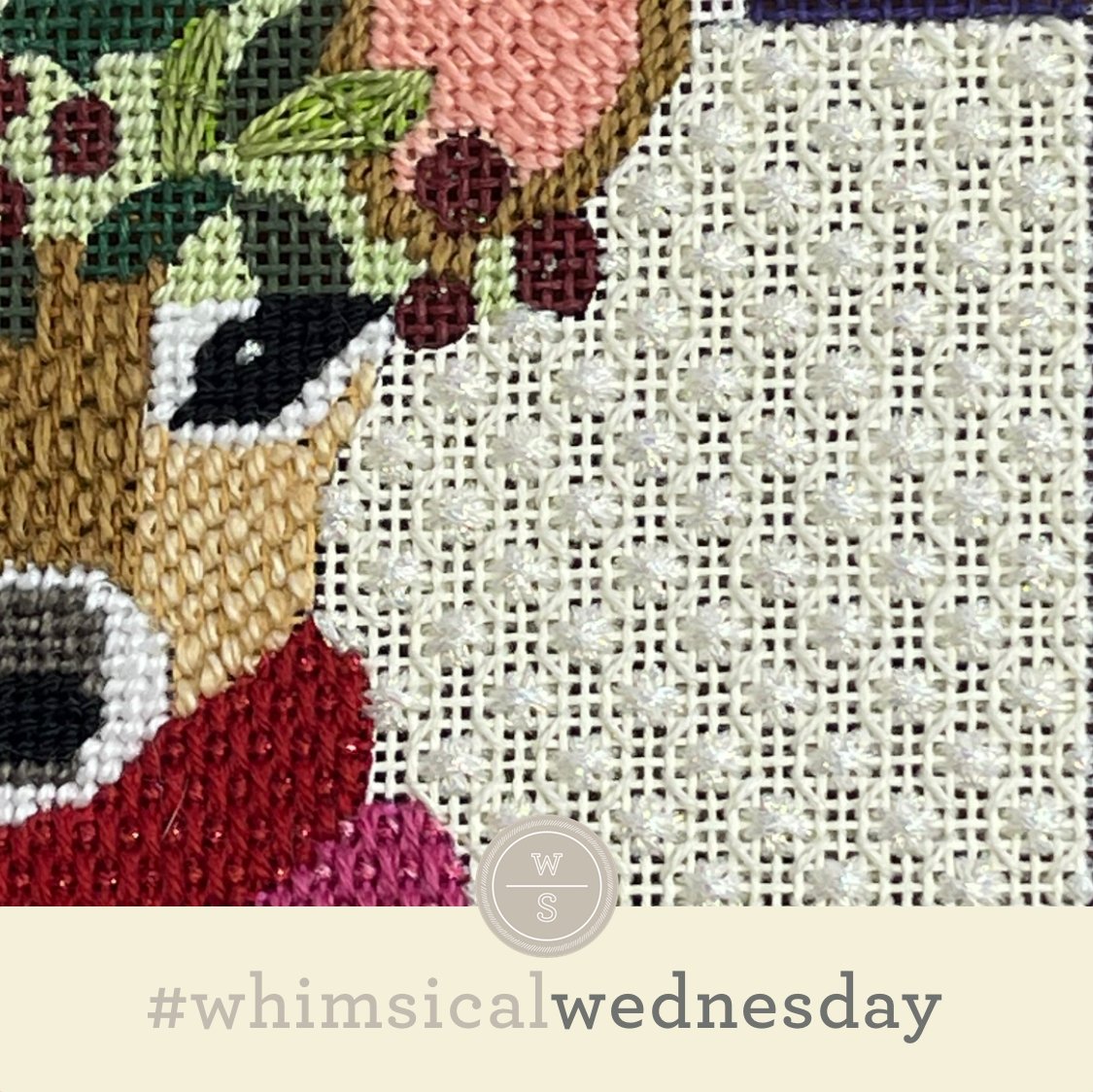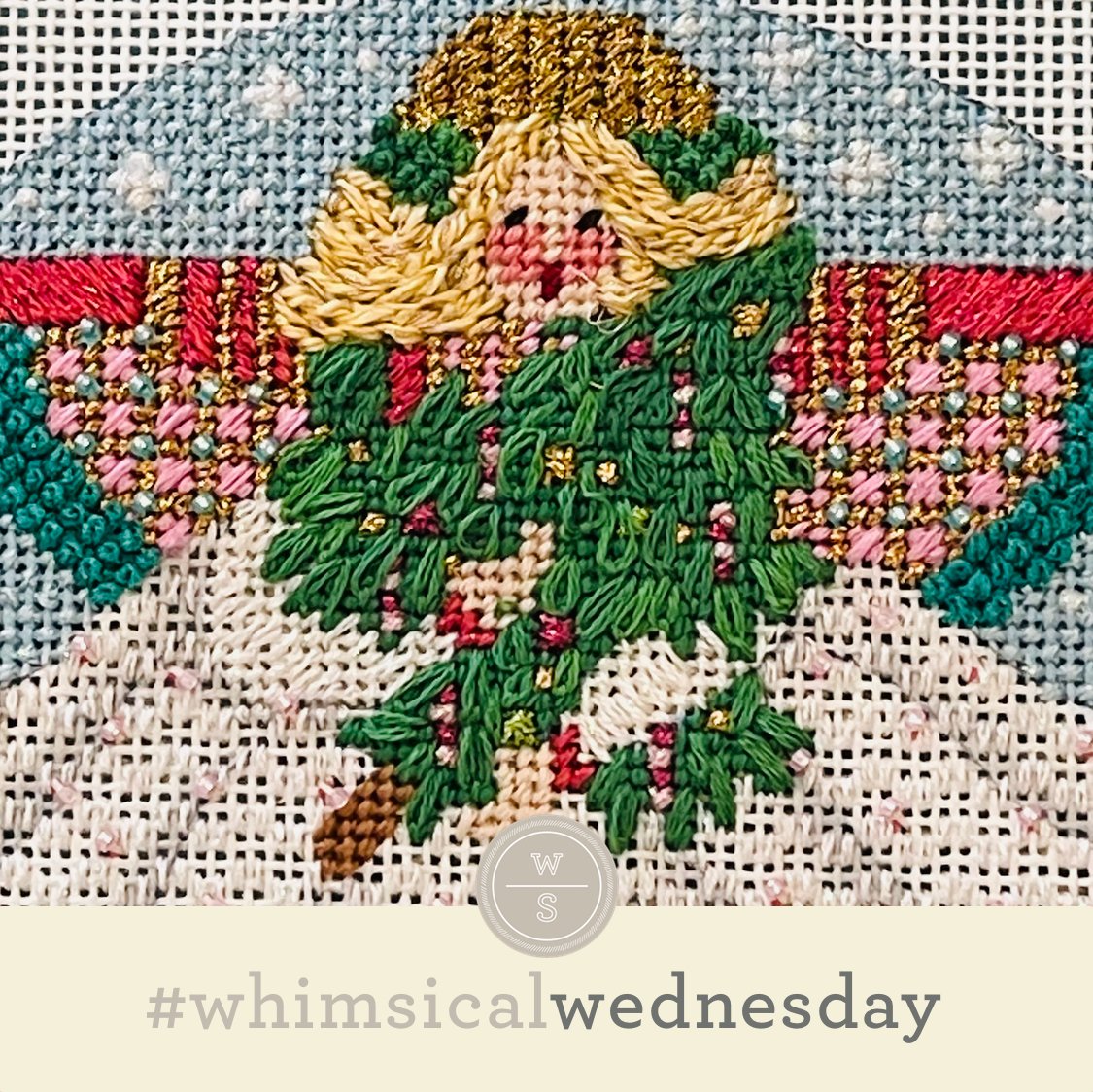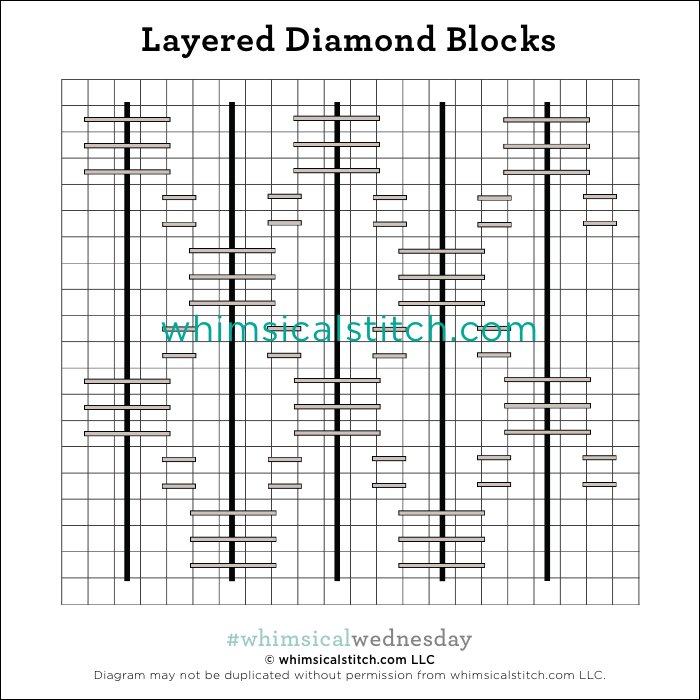As I was stitching away on a cute skirt on a project from my personal stash, a little voice was nagging at me. Much to my surprise, the voice was whispering, “Use a full coverage stitch there.” The voice was right.
To add to my surprise, I chose to do a variation of an Or Nue. Perhaps it is not your typical clothing stitch, but it really helped balance the open background on the canvas all the while not clashing with other decorative stitches on the piece. Win, win. The stitched sample uses size 16 Kreinik for the base threads (black lines) and Splendor for the stitches on top (aqua lines) on 13M.
I talk at length about Or Nue here. I encourage you to read the post as it offers additional insight and, more importantly, two other (more traditional) ideas for Or Nue.
The version I am sharing today simply skips a row between the top stitches (aqua lines). It almost looks like a weave. The diagram includes a sequencing path at the top, separate from the entire diagram. The path is all numbers, despite the fact it uses two threads. This is because it is very important to complete an entire row with both threads before you proceed to the next row.
To begin, add your base thread from edge to edge on a single row (black line, steps 1-2). The base thread rests in the ditch between two canvas threads. Park the first thread on the side and bring your second needle up from a hole under the first thread and return the needle one row up, gently pulling the base thread on top of the canvas thread above the ditch. Repeat this step across the row. When you get to the end with the second thread, park it to the side and return to your first thread. Add your next base thread from edge to edge and cover with the second thread.
I am really pleased with this version of Or Nue for clothing. It could also make a very interesting tree trunk, of all things, with two shades of Vineyard Silk, Rainbow Linen, or Straw Silk. It will make a pretty rug or bedspread with two different shades of threads, say pink and green.
These stitch diagrams, along with all other #whimsicalwednesday and #smallspacesunday stitch diagrams, can also be found on a Pinterest board here. Be sure to follow whimsicalstitch.com on Facebook, Pinterest, Instagram, and Twitter.
If you like what you see on this blog, there's more: Mary’s Whimsical Stitches Volume 1 is a contemporary how-to collection of more than 250 stitches for stitchers regardless of skill level. The book includes updated and sequenced diagrams from this blog, all-new stitches, and a chapter on the basics of needlepoint; Mary’s Whimsical Stitches Volume 2 features chapters on Balanced, Beading, Diagonal, Layered, Oblique, Small, and Straight stitches.
Also, you can download for free the first chapter from my first book which covers basic needlepoint stitches and stitch compensation techniques along with new top-line information on needlepoint materials and tools, how to handle threads, and other helpful needlepoint resources.
whimsicalstitch.com also sells Stitch Guides and Stitch Concepts for Melissa Shirley Designs, Zecca Designs, Sandra Gilmore, Purple Palm, Maggie, and Penny MacLeod, and many more. Click here to see the newest guides and click here to see the entire collection.
I hope you have the perfect spot for this stitch! Please enjoy! Have a wonderful #whimsicalwednesday!
A Note about Diagrams
I use color in diagrams to make them as clear as possible. The primary function of different colored lines is to illustrate a stitch sequence. For example, layering of colors demonstrates you add them in that order. They can also provide ideas on how to integrate additional threads (one line for each color). Or, you can use the same thread for all color lines. That's where I encourage you to use your imagination for the space you are stitching!





























